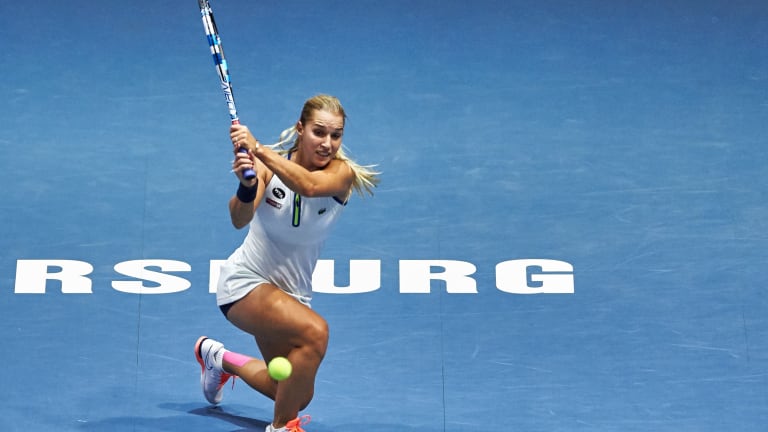How to play bigger than you actually are—just like the 5'3" Slovakian.
Dominika Cibulkova revels in every aspect of the sport, right down to its scent. When she holds a ball before a point, she often raises it to her nose and drinks in the smell. After changeovers, she doesn’t just walk back on court, she kicks her feet up high behind her. Between games, she bobs and weaves like a boxer. When Cibulkova wins a big match, she doesn’t just throw her arms in the air, she falls to the court in exuberance. The first step to playing tennis well is to play it enthusiastically.
Cibulkova doesn’t waste time between points. Whether she has just won or lost one, she “refocuses right away,” as she says, and moves onto the next point. In doing so, Cibulkova doesn’t give herself time to get negative after an error. But she doesn’t rush, which is what happens when a player gets frustrated and starts moving more quickly than usual. Cibulkova maintains her speedy but steady playing pace at all times.
